A kitchen can look brand-new by upgrading its cabinets by swapping out the old ones for new ones. But what if you hang your cabinets to a wall portion without studs? Is it possible? How should you do that? We researched these questions for you and here is what we discovered.
There are a few ways to hang kitchen cabinets without studs. You can do this by:
- Trying to connect to existing cabinets.
- Attaching it to a pre-mounted board.
- Using drywall anchors (expansion, threaded, and molly bolts).
Keep reading as we elaborate on the steps on how to hang your kitchen cabinet based on the above-mentioned methods. We'll also discuss if it is safe to hang them without studs and the possible dangers of doing so.

How To Connect A Hanging Cabinet To Existing Ones Without Studs?
Most experts advise joining the new cabinet with the current one because you cannot attach them to the studs. They don't have a lot of backing to rely on. As a result, the likelihood of slipping off will decrease.
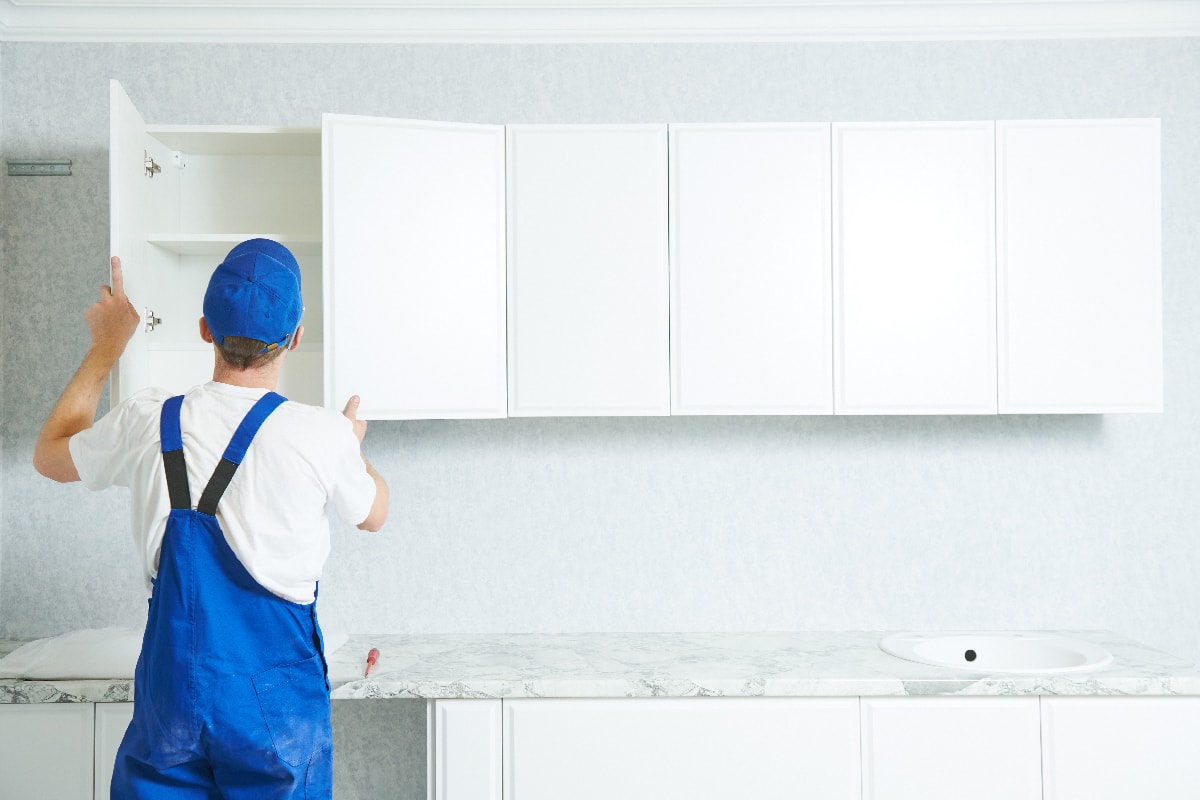
To do this, you must:
- Map your wall. Keep a rough sketch of the design of the wall and the cabinet.
- Don't forget to measure the wall after that. Make sure to take careful note of the nearby studs' distance as well.
- Attach the cabinet to your wall as planned.
- Then link them to the ones that are already there. As a result, the weight will be divided. To join the new and old cabinets together from the side, use nails.
- To support your hanging cabinet, you can alternatively use your base cabinets and accessories. In that situation, the size of the prop should be chosen with great care.
How To Attach A Hanging Kitchen Cabinet To A Pre-Mounted Board?
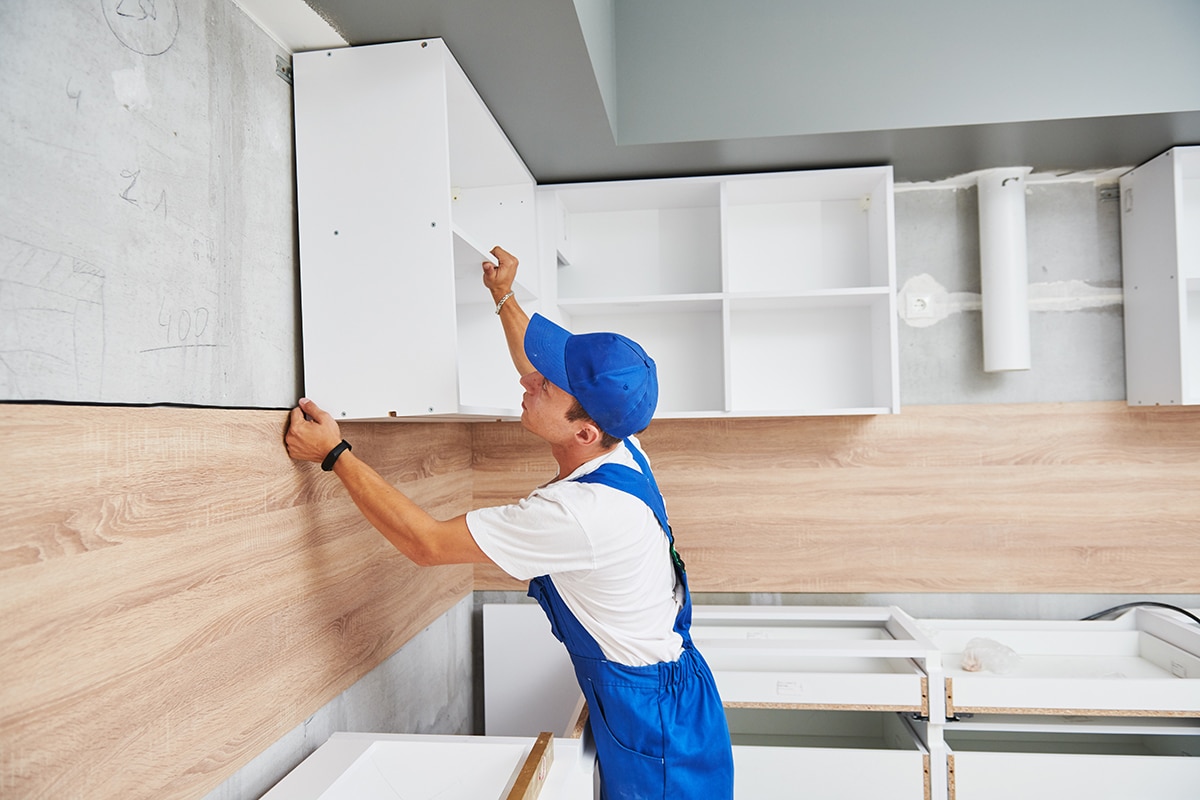
If you don't have an existing cabinet to attach your new one, then you can hang it on a pre-mounted board. Here's how to do it:
- Look for the two studs that are furthest apart from one another. Let it be your starting point.
- After that, you'll put in a long, durable piece of material between them. A 1" x 4" thick board might be your best option. This can support weight and is reasonably priced.
- As you finish mounting the board on the two farther-off studs. A nail is required every 8 to 10 inches. The cabinet's weight will then be divided. As a result, stability will improve.
- To make holes in the board piece and the wall, you must use a drill. After nailing the board, you can finish installing everything.
- After that, you can proceed with the intended cabinet installation procedure. Since you were unable to locate a stud behind the wall, simply carefully place the foundation that you require.
Can You Hang Kitchen Cabinets Using Drywall Anchors? [And How To]
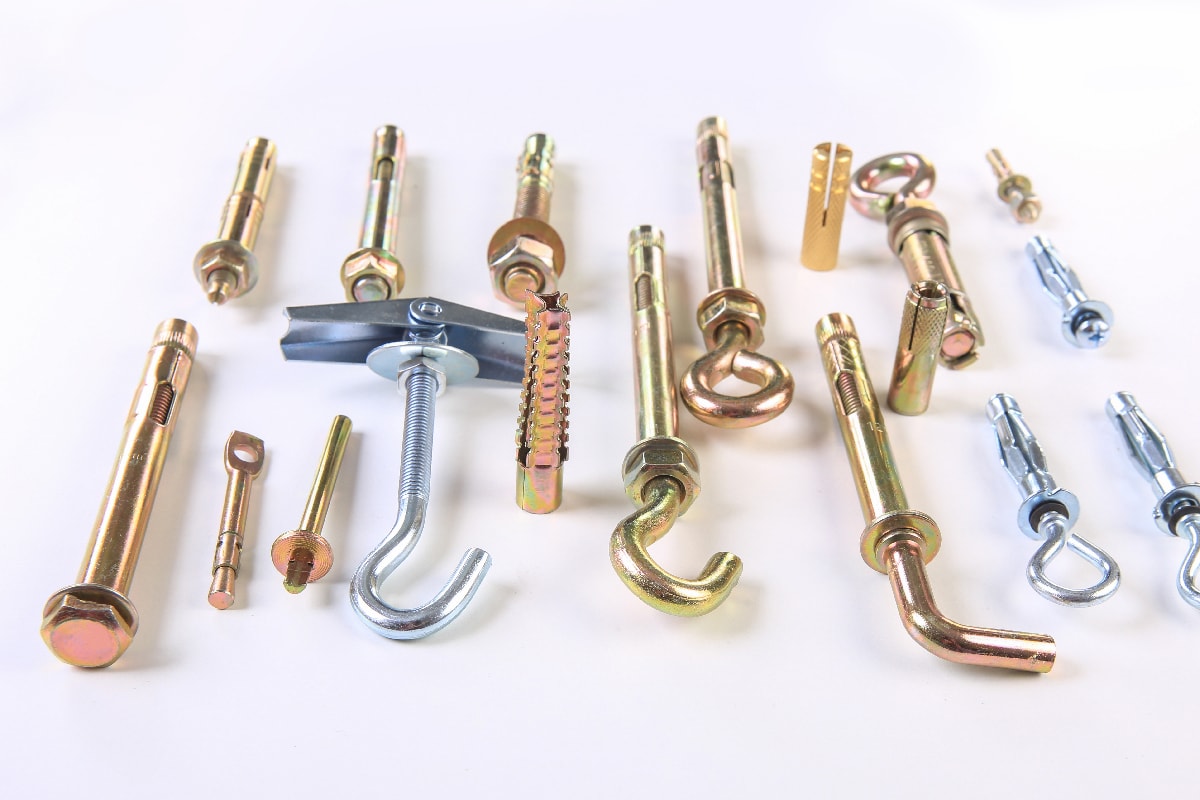
Yes, you can. When big objects are hung on a wall, a drywall anchor is a tool that connects the drywall and screw to increase stability.
To secure the object in position, the screw is inserted into the anchor. You might wish to select a certain drywall anchor according to the weight, shape, and wall cabinet size.
You can use these types of drywall anchors to attach your hanging cabinet to the wall without the use of studs:
- expansion anchors
- threaded anchors
- molly bolts
Expansion Anchors
Before starting, you must first recognize what an expansion anchor looks like.
Click here for this product on Amazon.
These anchors have wings that project outward from their hollow plastic screws appearance. These are the most frequently used tools, and they are conveniently included in nearly all shelf kits at your neighborhood retailers.
Expansion anchors are so named because they expand to snugly hold the walls after eating a screw. Due to their plastic construction, they can only support a maximum weight of 20 pounds. However, these can assist in hanging them if you have small cabinets.
Now that we got that out of the way, you can now start the installation process:
- On the cabinet's back, start by designating the drill spots.
- Make a mark for drilling at the same distance on the drywall as you did on the cabinet.
- Drill a hole in the wall that is almost the same length as the anchor piece after marking the regions on the drywall.
- Put the expansion anchor in the hole that has been drilled and gently hammer it into the drywall. The anchor should easily, and against some resistance, sink into the hole.
- Verify that the anchor slides in smoothly and completely.
- Make holes in the cabinet at the designated locations with the power drill.
- Install screws so that the sharp end protrudes at the back of the cabinet from the inside.
- Adjust the height of the cabinet jack where you need to install the cabinet.
- Affix the screws to each of the anchor holes on the cabinet while it is positioned on the jack.
- Place each anchor screw in place using the power drill.
- Check the cabinet's stability after removing the cabinet jack that was placed underneath it.
Threaded Anchors
These anchors have a plastic, threaded body that resembles screws. They are frequently referred to as "Zipp-its." Their wider threads enable them to bite down deeply into the drywall, resulting in an exceptional hold.
Click here for this product on Amazon.
Despite having a better grip than expansion anchors, threaded anchors are still only appropriate for light-duty applications. They are only expected to be able to support loads up to 30 pounds.
To use them, you can follow these steps:
- On the walls and the cabinet's back, mark the drill points at equal intervals.
- Drill the markings' holes. The depth of the holes should match the threaded anchor's length.
- Drive each anchor into a hole with the power drill. So that they are completely within, drive it into the drywall.
- Now drill the holes in the cabinet at the indicated locations.
- Install the screws so that the end is visible from the rear of the cabinet from the inside.
- Under the drywall, place the cabinet jack in the proper location.
- Place the cabinet on the jack and place an anchor for every one of the screws that are sticking out.
- Evaluate the stability after removing the jack.
Molly Bolts
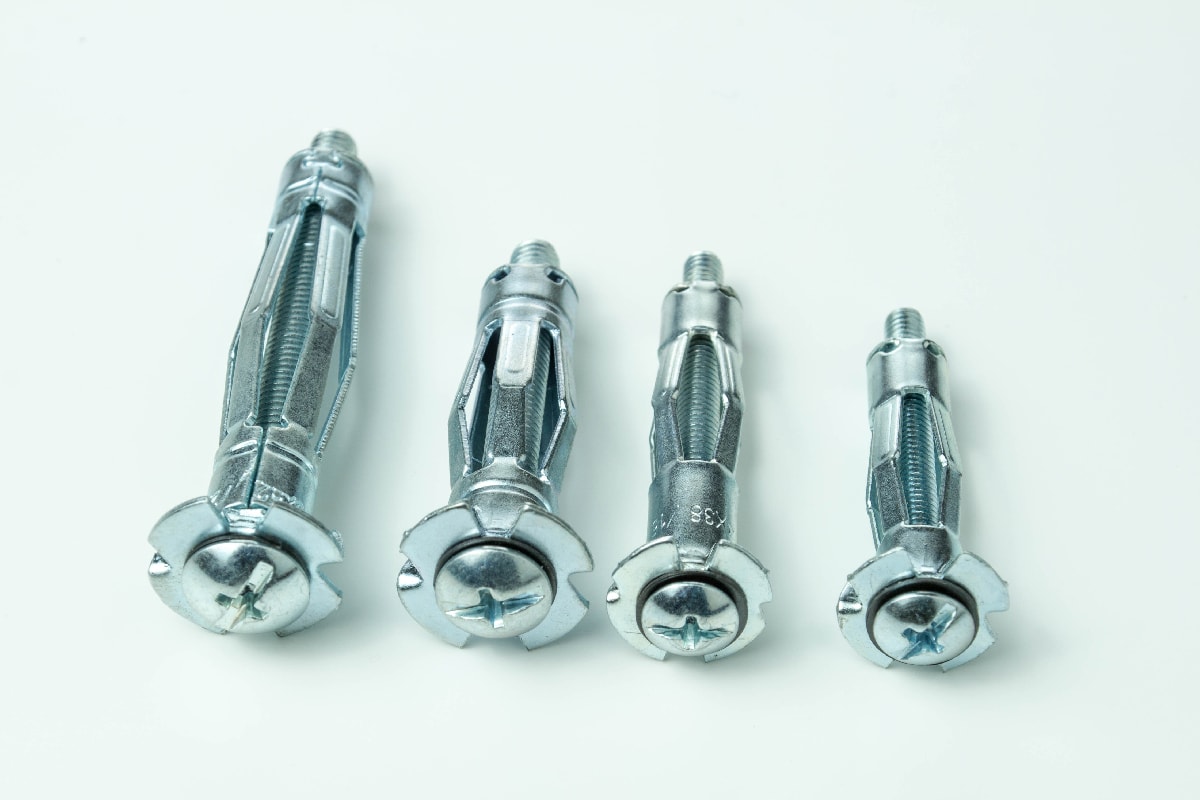
Molly bolts are heavy lifters composed of steel that can withstand the pressure of nearly any surface. The installation process is simple. You need to select the appropriate-sized anchor to firmly grab the drywall to use it with your cabinet.
Click here for this product on Amazon.
You can hang your kitchen cabinet with molly bolts by following these steps:
- Start drilling on the wall according to the bolt diameter after noting the locations of the drill holes on the cabinets and the wall.
- To ensure a tight fit, hammer the anchor component into the drilled holes.
- If the head of the molly bolt has teeth, be sure to hammer it thoroughly until the teeth catch the drywall.
- Molly bolts already have a screw in them. Remove that screw from the one that was installed.
- Now drill the cabinet markings.
- Put the drilled holes above the molly bolts in the wall and attach the cabinet to a cabinet jack.
- To drive the screws into the molly bolts one at a time, insert them from the interior of the cabinet.
- For a tight fit, apply the washer that is included with the bolt.
- Check the stability of the cabinets after removing the jack from underneath.
Additionally, here are some tips to remember when you use molly bolts:
- Be aware that molly bolts have four tiny metal wings on the opposite end that grabs the drywall and support the object being hung.
- For the strongest hold, press those wings up against the wall.
- Consequently, pick a molly bolt anchor of the correct size.
How Much Weight Can A Hanging Cabinet Attached To A Drywall Hold?
Only 5–10 pounds of weight may be supported by drywall. Therefore, it can't support any more weight than that without a stud. It might tumble off the wall and get hurt. So, the maximum weight that drywall can support without a stud is close to 10 pounds.
Can You Use Toggle Bolts To Attach A Hanging Cabinet To A Wall Without Studs?
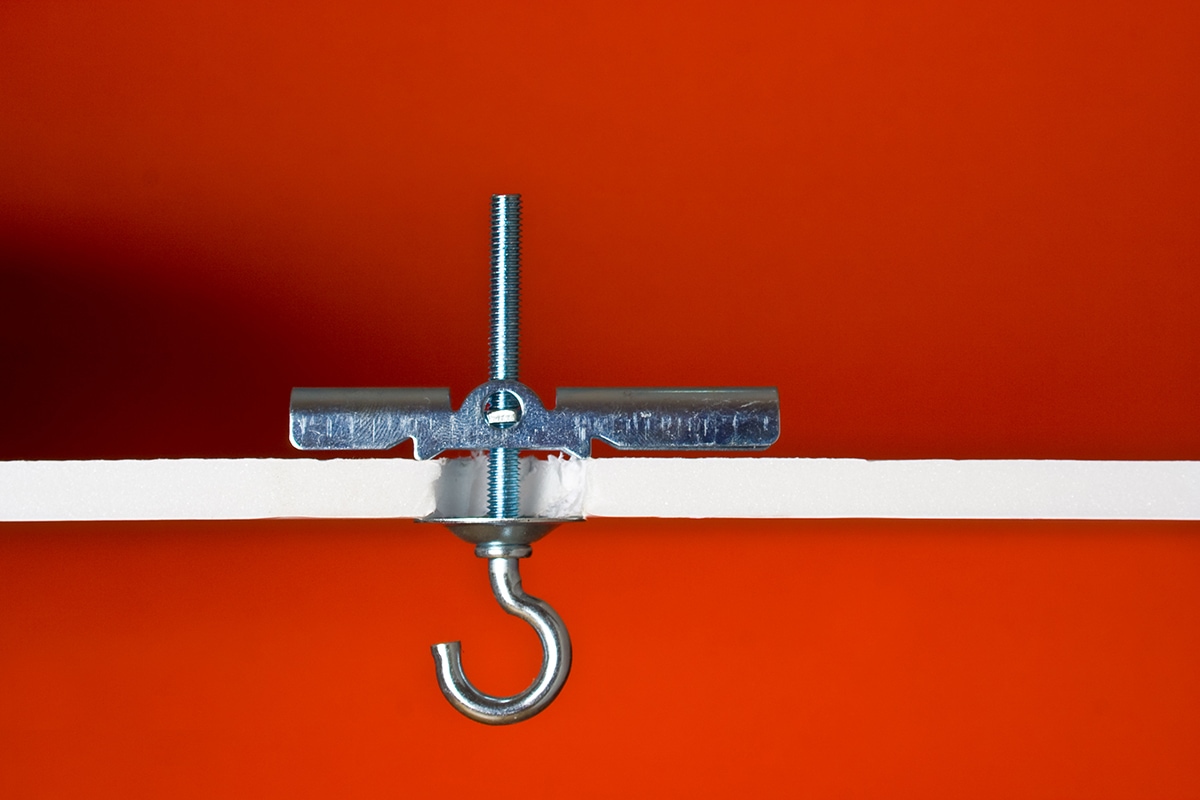
You can use toggle bolts. While these bolts are the strongest anchors that can be used with drywall, they can also be the most challenging to deal with. The fastener comprises a machine screw with a spring-loaded toggle mechanism.
Click here for this product on Amazon.
To insert it, close the toggle mechanism, and push it through the wall hole. The toggle is then forced to open again by the spring and is thus caught against the wall's reverse side. The toggle and the screw head are caught between the cabinet's back and the wall as the screw is tightened.
These fasteners clamp a bigger surface area of the drywall than any other because of the enormous footprint of the toggle. As a result, they are much stronger, and each toggle bolt can sustain more than 100 pounds.
Final Thoughts
Choose the most convenient and most comfortable way of hanging a kitchen cabinet. You can use any of the methods mentioned above. Nevertheless, just remember and take note of the load your cabinet must carry. This will help you choose which method is best for you.
If you enjoyed this article, check out these other posts before you go:
What Color Kitchen Cabinets Go With Gray Walls?
How Narrow Can A Kitchen Cabinet Be?





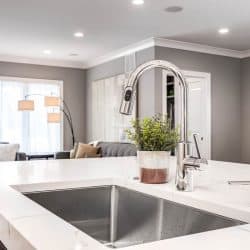
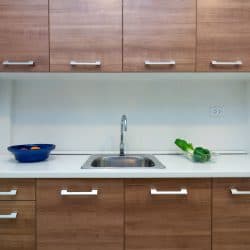
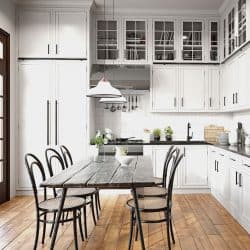
![A kitchen with appliances and a beautiful interior, Thermofoil Cabinets: Pros & Cons [Considerations For Homeowners]](https://kitchenseer.com/wp-content/uploads/2022/09/Kitchen-with-appliances-and-a-beautiful-interior-250x250.jpg)

![This modern kitchen gives a wide view showing the wood floor and cabinets, How Tall Are Kitchen Cabinets? [3 Types Examined]](https://kitchenseer.com/wp-content/uploads/2020/07/This-modern-kitchen-gives-a-wide-view-showing-the-wood-floor-and-cabinets-250x250.jpg)